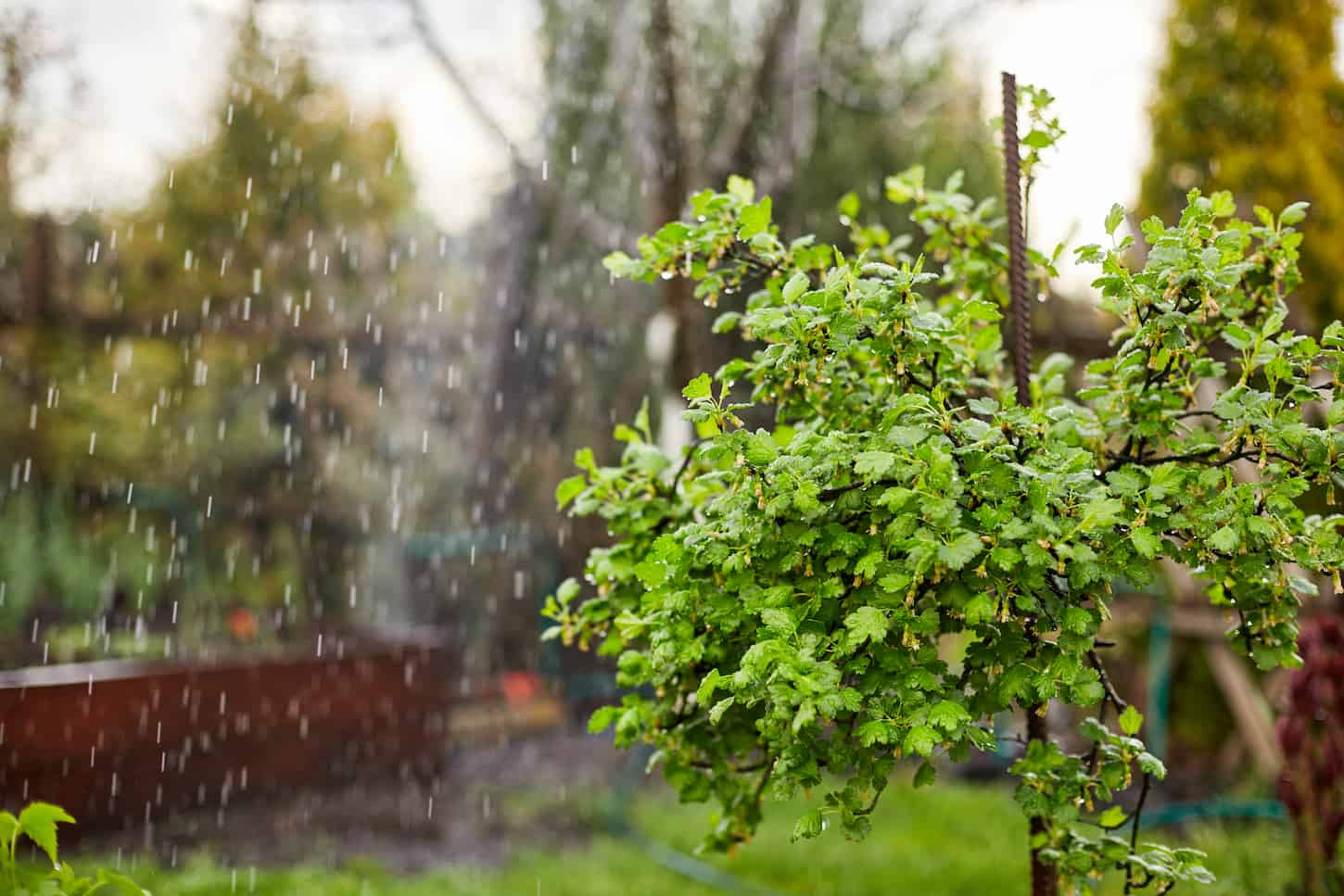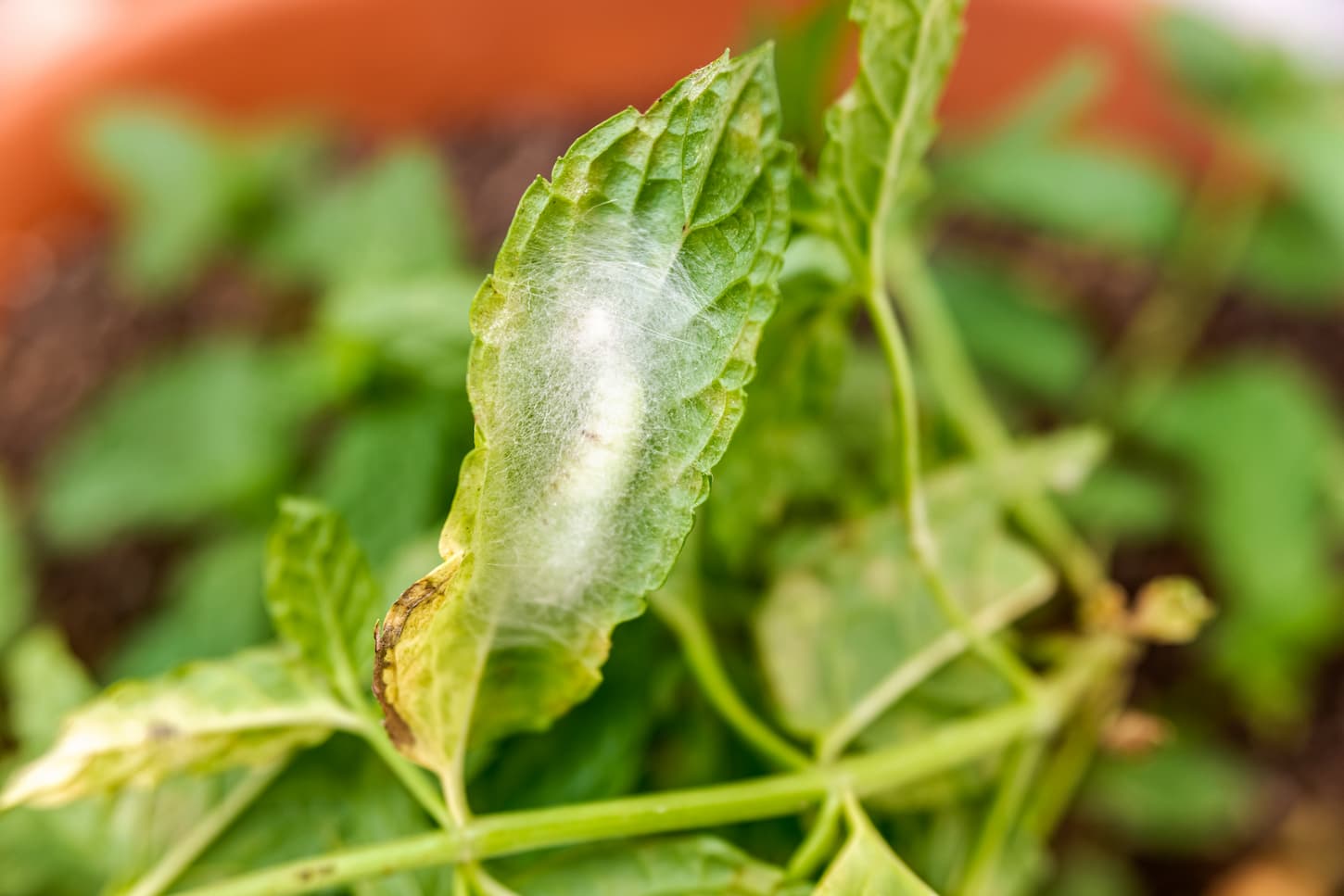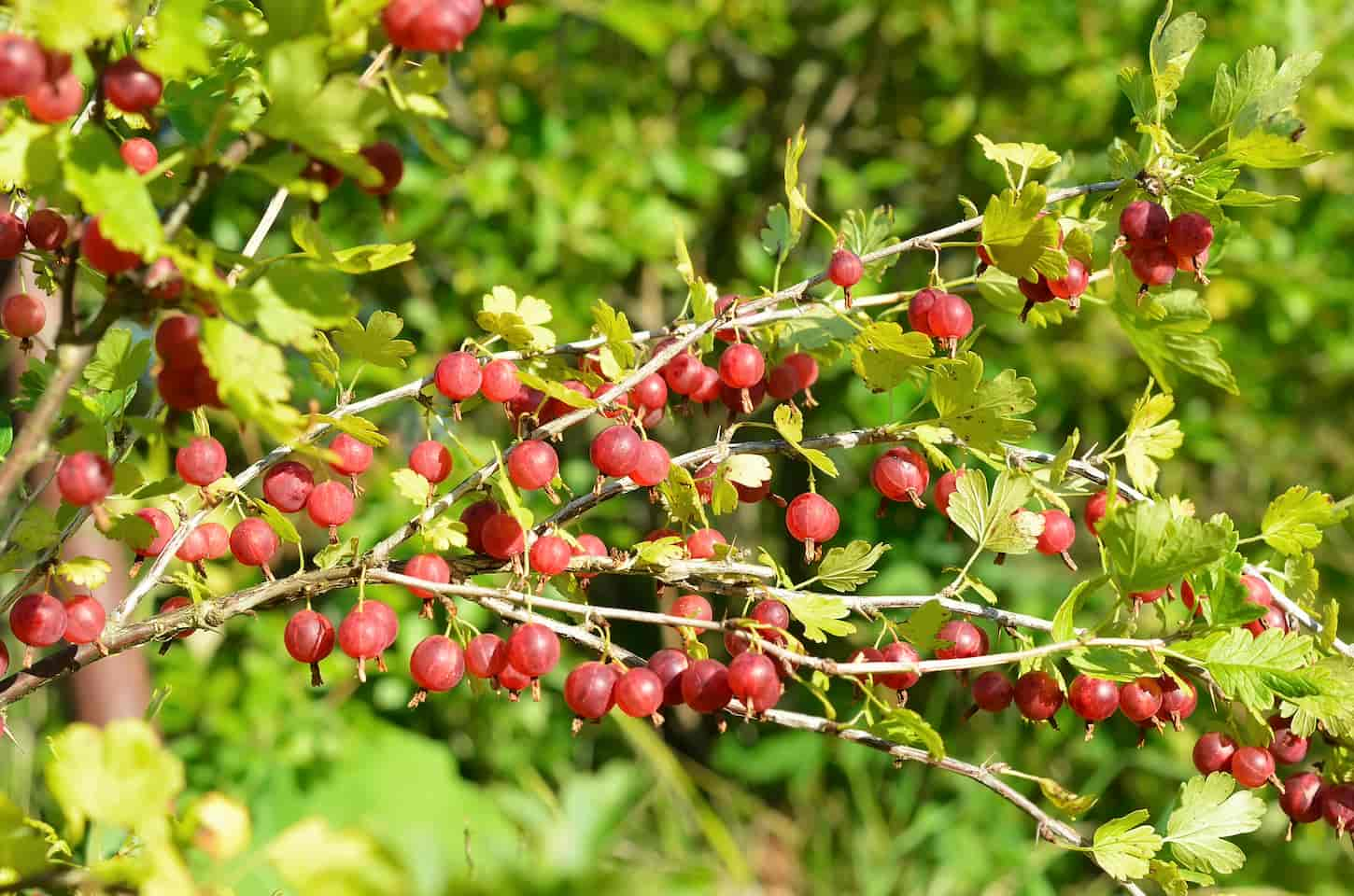If you are having trouble fruiting your gooseberry bush, you are likely frustrated and not sure what to do. Luckily, this article has all the information you need regarding gooseberry fruiting problems.
If your gooseberry bush doesn’t have fruit, the main causes to consider are:
- The age of the bush. It can take up to three years for the fruit to grow.
- The climate. Dry climates aren’t ideal.
- Insufficient mulching and composting.
- Birds and pests ruining the bush.
- Insufficient pruning.
- Mildew.
If you want to learn about these causes in more detail, be sure to keep reading.

Reasons a Gooseberry Bush Doesn’t Have Fruit
As briefly mentioned above, there are many reasons why a gooseberry bush doesn’t have fruit. Here they are in more detail.
Reason #1: The age of the bush affects fruit
If your gooseberry bush is young, it’s likely not ready to fruit yet. In many cases, it can take up to three years for your bush to begin fruiting.
Even at three years old, it can sometimes take even more time to fully mature.
So, if your gooseberry is below three years old, it’s best to wait. However, if it’s over three years old and still isn’t fruiting, you should consider some of the other causes.
Reason #2: Issues with the climate affect fruit
The climate is an important factor to consider when it comes to your gooseberry bush not fruiting. Cool and damp conditions are the most ideal, but it’s possible to grow gooseberries in other weather conditions with proper maintenance.
In most cases, your bush won’t need to be watered. However, if the climate in your area is warm and dry, you should water it every 14 days.
It also needs plenty of sunlight to fruit, so be sure to keep it in a well-lit area. However, too much hot sunlight is bad for the berries; be sure to have a balance between shade and sunlight if you’re in a hot region.
Reason #3: The bush doesn’t have enough mulch
If you aren’t maintaining your gooseberry bush properly, it can prevent it from fruiting. Removing weeds is the first step to maintaining your bush.
Mulching is also important. Gooseberry bushes require moist soil to grow and prosper, and the best way to retain moisture is through mulching.
Applying manure or garden compost to the base of the bush is the best way to feed it. It’s also important to note that too much mulching can cause additional problems.
If you apply too much, the roots lose oxygen and access to moisture, so the bush ends up dying. Once you manage the amount of mulch, you won’t have any issues!
Additionally, it’s good to mulch frequently using grass clippings. Grass clippings contain nitrogen, which helps your gooseberry bush to fruit and grow.

Reason #4: Birds and pests are getting to the bush
There are plenty of pests and birds that can damage your gooseberry bush and prevent fruiting. These pests include aphids and gooseberry sawflies, example.
Sawflies will eat through the leaves and can cause significant damage to your bush. Since they eat the leaves, they can affect fruiting for the next year.
To control sawflies, be on the lookout for larvae on your bush. If you spot any, be sure to remove them. You can also use repellents that are safe for gooseberries, which should keep the pesky sawflies away.
Additionally, birds can fly around your bush and eat the leaves and berries. The best solution for this is to keep a net around your bush.
When netting your bush, you should use bamboo sticks to keep the net structured; this helps to keep the net away from the bush. Otherwise, the net can get sucked into the plant as it grows.
Okay, it doesn’t actually get sucked into the plant, but the plant grows around it.
Furthermore, if the net lies directly on the bush, birds can still get at it, so it’s best to use sticks.
Reason #5: Fruit affected by insufficient pruning
If you’re not pruning your gooseberry bush, or not pruning it correctly, it could be the reason why it’s not fruiting.
One of the main reasons pruning is important is that it renews the bush by allowing more airflow. You should cut off any branches that cross, and you should additionally cut any parts of the branches that are drooping downwards.
After pruning, your bush branches should be predominantly facing upwards. You should also cut back any dead or diseased branches.
Pruning correctly will help your bush fruit remain in a healthy condition.
Reason #6: Gooseberry mildew
If your bush experiences mildew, it can prevent fruiting. Mildew begins as a white, powdery coating on the leaves and eventually spreads to other parts of the bush.
It can slow down the growth of the fruit and affects the quality of the fruit if left untreated. The best way to prevent mildew is to make sure the plant has plenty of air.
Mildew is fungal, so it thrives in warm and moist conditions. If there is plenty of air circulation, it’s harder for mildew to form.

How to Get a Gooseberry to Fruit
The best way to get a gooseberry to fruit is through proper care, pruning it, mulching it, dealing with pests and diseases to keep the plant healthy, and making sure the environment and soil are appropriate.
The best way to get a gooseberry to fruit is by using all the information above, but let’s look at the most important points.
- It’s highly important to ensure that the soil is moist and that your bush is in direct sunlight for the best results.
- Be sure to mulch your bush with rotted compost or manure annually. It’s also important to prune it every year to keep the shape upturned and to get rid of any dead or diseased branches.
- Watering your bush during dry spells will help it grow and fruit, so don’t forget to do this if you’re somewhere with hot weather and little to no rain.
- Keep it netted to avoid birds getting at your fruit.
The hardest part is being patient, as gooseberries do take three years to start getting good at producing.
How Long Does It Take for Gooseberries to Produce Fruit?
Gooseberries take up to three years before the bush produces any fruit. It’s also normal for a bush to take even longer than this to fully develop, let alone produce quality harvests.
Do You Need Two Gooseberry Bushes to Get Fruit?
Gooseberry bushes are self-pollinating, which means no more than one bush is required to get fruit. Although it’s not necessary to plant more than one gooseberry bush, gardeners can still plant as many as they want!
Not only do they not require other gooseberry plants for pollination, but they also don’t require other species and insects, such as bees. Therefore, gooseberry bushes are easy to grow in most places.
Some Important Gooseberry Growing Tips
Here are some additional gooseberry bush tips you should know:
- Late winter is the best time to prune
- Mulching should be carried out during spring
- Once your bush has fruited, the best time of year to pick the gooseberries is the summer months (July and August)
- After picking your gooseberries, they should be consumed within a few days because they tend to rot quickly.
However, it’s perfectly fine to freeze, dehydrate, or freeze-dry them if you want to use them in a few weeks or months! Refrigerating also helps them last a few extra days.

Next Steps
Hopefully, you now know why your gooseberry bush isn’t fruiting. It can be frustrating, but if you follow this guide, you should be able to enjoy your gooseberries in no time!
Next, be sure to read our complete guide to berry care, so you can read more about how to care for your gooseberry plant. It covers more than just gooseberries, in case you’re wanting to add another berry variety to your garden!
Resources
- “Growing Currants and Gooseberries in the Home Garden.” UMN Extension, extension.umn.edu/fruit/growing-currants-and-gooseberries-home-garden. Accessed 17 Dec. 2021.
- “How to Grow Gooseberries / RHS Gardening.” Royal Horticultural Society, www.rhs.org.uk/fruit/gooseberries/grow-your-own. Accessed 17 Dec. 2021.
- Utah State University. “Gooseberries in the Garden.” USU, 19 Oct. 2021, extension.usu.edu/yardandgarden/research/gooseberries-in-the-garden.
